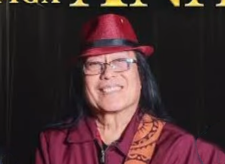An artist’s ability to make a significant impact on a country’s history is demonstrated by Freddie Aguilar’s estimated net worth of $6 million, which goes beyond a simple calculation of music sales and royalties. His cultural impact and financial success are remarkably similar in that they were both developed gradually, maintained over many years, and remarkably successful at connecting with everyday people.

Aguilar was born in Santo Tomas, Isabela, but his early life was anything but typical. He abandoned his engineering studies to pursue a guitar instead of circuit boards, a choice that, while seemingly rash at the time, turned out to be incredibly obvious in retrospect. With over thirty-three million copies sold worldwide and the only Filipino song translated into more than fifty languages, his music, particularly the timeless ballad Anak, conveyed emotions that extended well beyond his native country.
Freddie Aguilar – Profile Summary
| Category | Details |
|---|---|
| Full Name | Ferdinand Pascual Aguilar (Muslim name: Abdul Farid) |
| Nickname | Ka Freddie Aguilar |
| Date of Birth | February 5, 1953 |
| Place of Birth | Santo Tomas, Isabela, Philippines |
| Nationality | Filipino |
| Occupation | Singer, Songwriter, Musician |
| Genres | Folk, Manila Sound, Original Pilipino Music (OPM) |
| Years Active | 1973 – 2025 |
| Net Worth | Approximately $6 million |
| Famous Works | “Anak” (1978), “Bayan Ko,” Kumusta Ka, Minamahal Kita |
| Labels | Vicor Music/Sunshine, RCA |
| Associated Act | Watawat Band |
| Marital Status | Married |
| Children | Maegan, Isabela, Jonan, Jeriko |
| Recognition | Icon of OPM, Voice of People Power Revolution |
| Reference |
Anak’s career financial uncertainty was greatly lessened by his worldwide success alone, which gave him royalties that still come in a steady stream today. More significantly, the song solidified his reputation as a musician whose lyrics were both lyrical and profoundly human, reflecting hardships that were remarkably universal in families around the world. His capacity to transform personal suffering into universal art was especially advantageous to his long-term financial success.
It wasn’t just ballads that featured Aguilar’s voice. It became the anthem of defiance during the People Power Revolution of 1986 after he loaned it to Bayan Ko, bringing millions of people together in nonviolent protest against authoritarian rule. He was placed alongside renowned protest singers like Bob Dylan and Victor Jara because of his bravery in converting music into political resistance. By demonstrating how songs could be both powerful and effective instruments for change, he brought attention to the expanding nexus between culture and activism.
Aguilar released albums like Kumusta Ka and Minamahal Kita in the 1990s and early 2000s, which significantly enhanced his commercial portfolio and strengthened his reputation. His ability to blend folk roots with contemporary arrangements demonstrated that he could change without losing his authenticity. Because of this adaptability, his income stayed consistent even as Asian music tastes drastically changed.
His reputation as a cultural figure was not lessened by his contentious personal life. His public narrative included marriages, including one performed according to Islamic rites that provoked national controversy. However, his standing as a particularly resilient figure in Filipino music persisted, much like the ways in which John Lennon or Bob Marley maintained their fame in spite of their difficult personal lives. Aguilar believed that truthfulness kept audiences loyal and that authenticity was more important than appearance.
It is evident from evaluating his six-million-dollar fortune that his cultural and financial histories are inextricably linked. His wealth was directly derived from album sales, royalties, and live performances, but his music’s ability to become an enduring legacy is what really made it valuable. When the Philippines faces issues of democracy, national pride, or cultural identity, Aguilar’s legacy emerges much more quickly than that of many other artists who fade when trends shift.
The raw power of his performances persisted even in later years. Younger Filipinos found Anak to be just as relevant as their parents were decades ago after discovering his work on streaming services. This continuity has been especially inventive in a field that is frequently dominated by short-lived celebrity, and it illustrates how folk art can endure forever when it is grounded in reality. Therefore, his wealth stems from a deep connection with people from all eras rather than just contracts or labels.
Aguilar’s wealth highlights the economic potential of cultural identity in a larger sense. He demonstrated that Filipino music could compete on a global scale, making him a very trustworthy example for upcoming OPM musicians hoping to gain international acclaim. His journey is strikingly similar to that of musicians Fela Kuti in Nigeria and Ravi Shankar in India, whose even greater role as cultural ambassadors eclipsed their personal wealth.
His career has had an impact that goes beyond financial gain. Protests, family get-togethers, radio stations, and private times of introspection all featured his songs. That reach, which is incalculable in terms of numbers but unquestionably potent, demonstrates how music has the power to influence collective identity and public memory. The material aspect of Freddie Aguilar’s success is reflected in his six million dollar net worth, but his lasting legacy may be the intangible wealth of influence he leaves behind.
